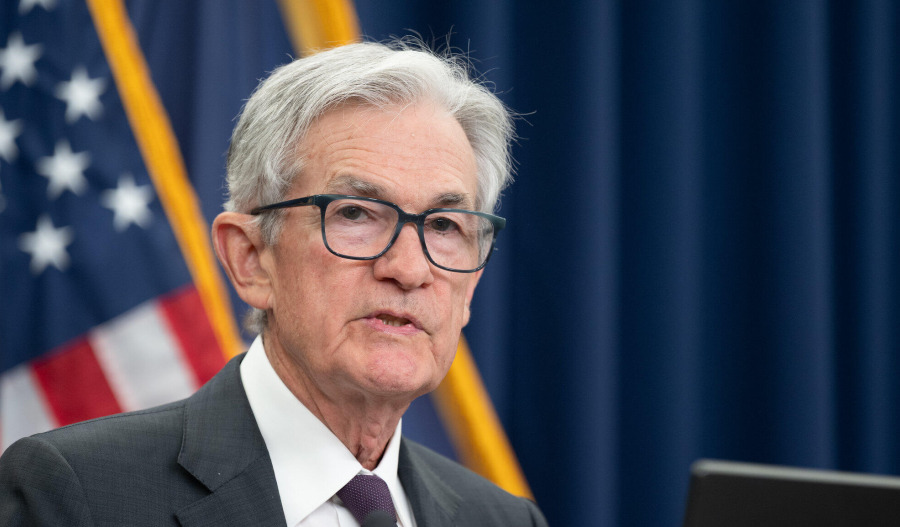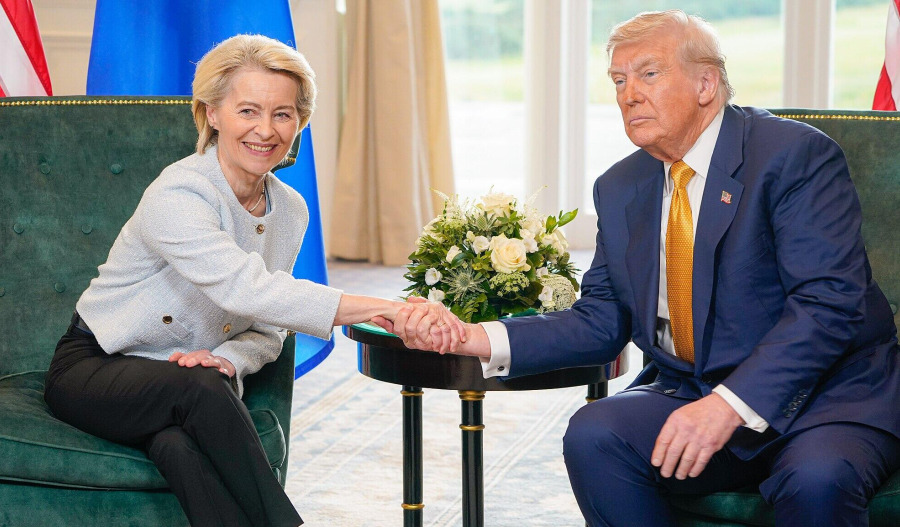The United States economy grew at a stronger-than-expected pace of 3% in the second quarter, bolstered by a sharp reversal in imports and a pick-up in consumer spending, despite ongoing tariff pressures from President Donald Trump’s trade policies.
The Commerce Department reported Wednesday that gross domestic product (GDP) rose by 3% from April through June, seasonally and inflation adjusted, surpassing the 2.4% forecast and rebounding from a 0.5% contraction in the first quarter.
Consumer spending, which accounts for more than two-thirds of U.S. economic activity, rose 1.4% in the second quarter, up from 0.5% in the prior period.
Imports plunged 30.3% after surging 37.9% in Q1, after businesses front-loaded purchases ahead of Trump's April 2 tariff announcement, while exports declined 1.8%.
Trump responded to the GDP beat with renewed pressure on the Federal Reserve to cut interest rates.
“2Q GDP JUST OUT: 3%, WAY BETTER THAN EXPECTED!” he posted on Truth Social. “'Too Late' MUST NOW LOWER THE RATE. No Inflation! Let people buy, and refinance, their homes!”
The Fed’s preferred inflation gauge, the personal consumption expenditures (PCE) price index, rose 2.1% during the quarter, just above the central bank’s 2% target, while core PCE, which excludes food and energy, came in at 2.5%, down from 3.5% in Q1.
The Federal Reserve met later on Wednesday and held its key interest rate at 4.25% to 4.5%, where it has remained since December.
Some metrics in the GDP report point to underlying weakness. Final sales to private domestic purchasers, a key demand indicator tracked by the Fed, rose just 1.2%, slowing down from 1.9% in Q1 and marking the weakest pace since Q4 2022.
Residential investment also declined 4.6% amid persistently high mortgage rates, which Trump has repeatedly criticised.
Federal government spending fell 3.7%, following a 4.6% drop in Q1, though state and local government expenditures rose 3%.
Eurozone Growth Slows Sharply
In contrast, economic growth in the eurozone slowed to just 0.1% in the second quarter, marginally beating expectations of flat growth but well below the 0.6% pace recorded in Q1. The deceleration came as the effects of U.S. tariffs rippled through global trade channels.
Across the broader European Union, GDP rose by 0.2% quarter-on-quarter. On an annual basis, eurozone GDP grew by 1.4%, while EU GDP increased by 1.5%, both slightly lower than in the previous quarter.
Spain led the region with a 0.7% expansion, thanks to strong consumer demand, a rebound in business investment, and higher exports. France also surprised on the upside, with GDP growing 0.3% versus expectations of 0.1%, a marked improvement from Q1’s revised 0.1%.
Portugal and Estonia posted quarterly growth of 0.6% and 0.5% respectively.
Germany, the eurozone’s largest economy, shrank 0.1% in Q2, its first contraction since mid-2024, amid weaker investment in machinery and construction tied to U.S. tariff effects. The statistics office also revised Germany’s Q1 growth down to 0.3% from an earlier 0.4%.
Italy’s economy also contracted by 0.1%, reversing Q1’s 0.3% growth and missing forecasts for a 0.2% rise.
Hungary’s economy grew 0.4%, recovering from a 0.1% contraction in Q1, while Czech growth slowed to 0.2% from 0.8%.



